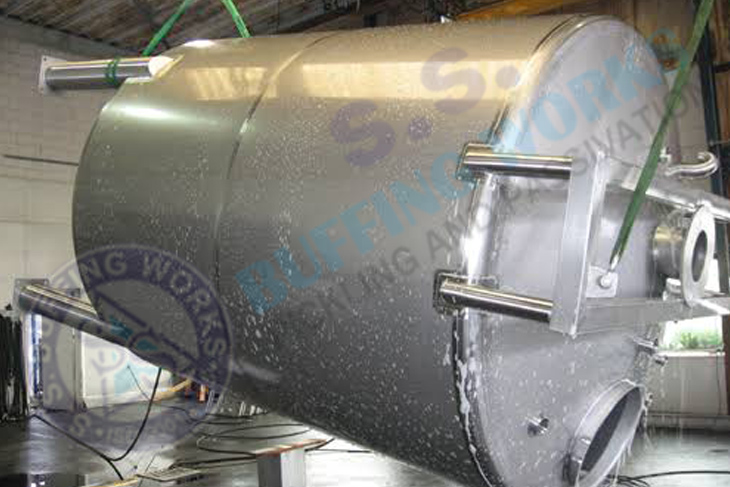When stainless steel has been heated to elevated temperatures, such as during annealing or welding, an oxide scale will form on the surface unless the material is completely surrounded by a protective atmosphere. Any such oxides should be removed to restore the stainless steel to its optimum corrosion resistant condition. Because they may vary in nature and composition, there is no single acid or process that will universally remove all types of oxides.
“We provides Cleaning and Descaling Stainless Steel on different machineries which includes All Stainless Steel Pharmaceutical Machinery / Chemical Machinery / Dairy Machinery / Beverages / Process Systems / Pressure Vessels / Storage Tanks / Reactors / Fermentators / S. S. Pipeline / Stirrers / Mixers / Heat Exchangers / Process Plants / Silos / Huge S. S. Equipments etc.”
The most common pickling solution used to remove scale produced by annealing austenitic stainless steel in air is 10 to 15 percent nitric acid plus 1 to 3 percent hydrofluoric acid. The solution is usually used at temperatures of 120 to 140°F (50 to 60°C). This acid mixture efficiently removes oxides, loosely imbedded iron and chromium depleted layers, and leaves the stainless steel surface in a clean, passivated condition. For light scale the hydrofluoric acid is usually about 1 percent and for heavier scales the HF content may be increased to 2 to 3 percent.
